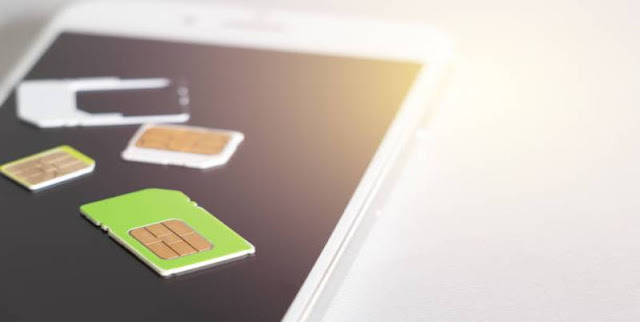Featured
- Get link
- X
- Other Apps
IoT SIM Card VS Traditional SIM Card: Key Differences and Applications

The evolution of era has given upward thrust to the Internet
of Things (IoT), a network of interconnected devices that speak and share facts
to allow smarter decision-making and automation. Central to the functionality
of IoT gadgets are SIM cards, however not all SIM cards are created same.
Traditional SIM cards, which have lengthy been associated with cell phones,
fluctuate drastically from IoT-unique SIM cards tailor-made for the unique demands
of the Internet of Things. This article explores the key differences among IoT
SIM cards and conventional SIM playing cards, as well as their respective
packages in latest interconnected international.
IoT SIM Cards:
IoT SIM cards, also called M2M (Machine-to-Machine) SIM
cards or facts-simplest SIM playing cards, are especially designed to
facilitate conversation among gadgets inside the IoT ecosystem. Unlike
traditional SIM cards, which might be commonly used for voice and information
offerings in smartphones, IoT SIM playing cards focus on supplying seamless
connectivity and data switch for a extensive variety of IoT gadgets, from
clever appliances to commercial sensors.
Key Differences:
Size and Form Factor:
Traditional SIM playing cards are available widespread,
micro, and nano sizes, primarily for compatibility with distinctive generations
of cellular phones. In contrast, IoT SIM playing cards often come in smaller
shape factors designed to suit the compact dimensions of numerous IoT gadgets.
Data-Centric Usage:
Traditional SIM cards are associated with voice calls,
textual content messaging, and cellular facts for smartphones. IoT SIM cards
are predominantly designed for data-centric applications, along with
transmitting sensor readings, tool reputation, and other information points to
vital servers.
Network and Coverage:
While conventional SIM cards rely upon purchaser-orientated
cell networks, IoT SIM playing cards are designed to work with specialized
networks optimized for IoT communique, together with Narrowband IoT (NB-IoT)
and Low Power Wide Area Network (LPWAN) technology. These networks provide
prolonged coverage, decrease electricity intake, and reduced prices for IoT
gadgets.
Data Plans and Pricing:
IoT SIM cards typically provide records plans tailor-made to
the wishes of IoT gadgets. These plans may also offer decrease facts prices and
reduced fees compared to conventional SIM card plans, which prioritize voice
and textual content offerings
Remote Management:
IoT SIM cards often come with remote management abilities
that permit directors to screen, control, and replace SIM card settings over
the air. This feature is vital for managing large fleets of IoT devices
throughout extraordinary places.
Applications of IoT SIM Cards:
Smart Metering:
IoT SIM playing cards allow software businesses to remotely
reveal strength, water, and gas intake in actual time. This facts helps
optimize aid allocation and hit upon anomalies or leaks right away.
Fleet Management:
In the transportation zone, IoT SIM playing cards are used
to music automobiles, reveal driving force behavior, and optimize routes for
advanced performance and price savings.
Environmental Monitoring:
IoT SIM playing cards facilitate the collection and
transmission of environmental records, such as air satisfactory, temperature,
and humidity. This facts is vital for city making plans, pollution control, and
climate studies.
Supply Chain Management:
IoT-enabled sensors equipped with SIM playing cards permit
real-time monitoring of products in transit, helping corporations screen the
vicinity, condition, and protection in their shipments.
Smart Agriculture:
IoT SIM playing cards are used in precision agriculture to
collect data from sensors monitoring soil moisture, crop health, and weather
situations. This data enables farmers to make knowledgeable decisions about
irrigation, fertilization, and pest control.
Traditional SIM Cards:
Traditional SIM playing cards are synonymous with mobile
communique and are widely used in smartphones, function telephones, and
capsules. They allow users to make voice calls, send text messages, and get
entry to cell data offerings.
Key Differences:
Multifunctional Usage:
Traditional SIM playing cards are designed for flexible
utilization, consisting of voice calls, textual content messaging, and cell
data. They offer a comprehensive bundle of offerings for client communique.
Voice Calls and SMS:
Traditional SIM cards are optimized for voice conversation
and textual content messaging, making them a preferred requirement for most
cell phones.
Consumer Cellular Networks:
Traditional SIM cards operate on patron cellular networks
with a focus on providing exceptional voice calls and speedy information speeds
for browsing and multimedia.
Pricing Structure:
Data-centric plans on conventional SIM cards are often
priced in another way from IoT SIM cards and may offer large information
allowances tailor-made to the intake styles of smartphone users.
Applications of Traditional SIM Cards:
Smartphones and Tablets:
Traditional SIM cards are critical additives of smartphones
and drugs, permitting customers to make calls, send messages, and get admission
to the internet.
Mobile Apps and Services:
Traditional SIM cards allow customers to apply a variety of
cell apps and offerings, such as social media, e-mail, navigation, and leisure
platforms.
Voice Communication:
Voice calls and text messaging stay middle capabilities of
conventional SIM cards, catering to individuals' communique needs.
Internet Access at the Go:
Traditional SIM cards offer convenient cellular internet get
entry to for customers who want to browse the net, check emails, or use on line
offerings while on the circulate.
Conclusion:
IoT SIM playing cards and conventional SIM playing cards
serve distinct purposes in trendy connected global. IoT SIM cards are tailored
to the particular requirements of IoT devices, emphasizing data conversation
and far off management, whilst conventional SIM playing cards are versatile
answers that offer voice, textual content, and information services for
smartphones and tablets. The differentiation between those two kinds of SIM
cards reflects the numerous variety of gadgets and programs that depend on seamless
connectivity, ultimately contributing to the boom and integration of the
Internet of Things and conventional cell communique.
- Get link
- X
- Other Apps
Popular Posts
Education Requirements for Web Developers
- Get link
- X
- Other Apps
How Can You Build Subscriber Relationships With Email?
- Get link
- X
- Other Apps

.jpg)